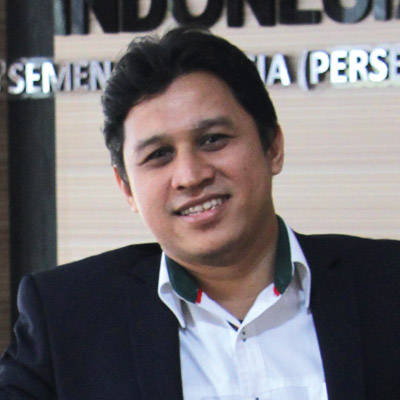
Factors to be considered when utilising a WHRG in cement manufacture
Irfan Zuchrufudin, Sr. Process Design & Engineer, Semen Indonesia, will use the Tuban Cement plant as a case study to discuss the key factors that need to be considered when installing and using a Waste Heat Recovery system.
This comprehensive presentation will cover the following steps:
- Determining available waste gas on each clinker line with parameters such as gas flow, inlet temperature, outlet temperature, and pressure drop on all equipment, as well as dust content in gas flow, material abrasiveness, etc.
- Deciding the best system for the turbine generator; steam turbine, organic rankine cycle or kalina cycle.
- Deciding the optimum position of input/output Gas flow of Boilers in Process Flow Diagram (PFD) which not reduce The Kiln Capacity and must be able to be controlled when there are any changing of kiln operation condition.
- Reviewing and evaluating the condition of existing clinker line equipment and utility condition in case of Boilers on/off such as ID Fans, ESP, Main Filter, etc. Consider impact on WHRG in case of changes to the raw material or coal moisture.
- Evaluating and determining the boiler heat exchanger type and boiler dust treatment type.
- Evaluating and determining the effectiveness of the boiler’s tubing type. Consider the available and required area for boilers.
- Evaluating and determining quantity of steam turbines and review turbine generator efficiency.
- Evaluating and determining the location of each boiler, pump house, turbine generator building, condensers, utility equipment, and piping layouts for each line. Also consider accessibility & maintenance access for both WHRG and existing equipment.
- Evaluating and determining the type of dust transport system that will be used.
- Evaluating and determining the configuration of boilers, boiler feed pumps, steam turbines, economisers and the type of steam turbine condenser (air cooled or water cooled) and plot in the available area. Defining the instrumentation and control schematic diagram.
- Reviewing heat loss in boilers, the superheated steam piping system and overall system heat loss. This information can be useful for sensitivity analysis during feasibility study.
- Evaluating and determine the power generation scheme; including synchronisation with the national grid. Electricity utilisation and the cost of synchronisation also need to be considered.
- Estimating total Capex and running feasibility analysis to get approval from management.

Irfan Zuchrufudin
Sr. Process Design & Engineer, Semen Indonesia